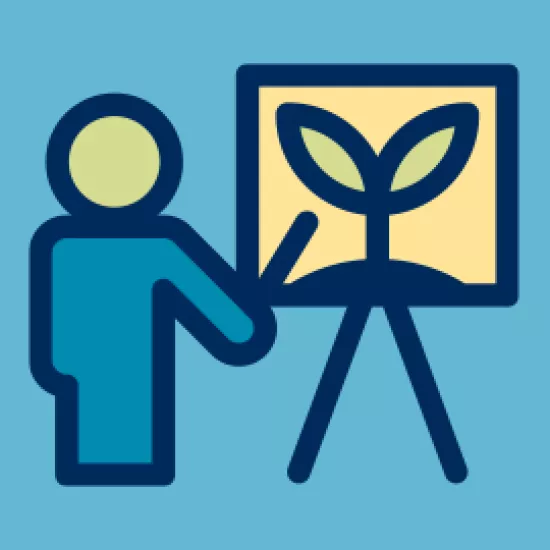Equipment, supplies and repairs
Announcements through listserv
Rooftop greenhouse versus research greenhouse
This document serves to provide guidance on the operation and maintenance of the University of Toronto Mississauga’s research greenhouse (RGH) and growth chambers. Space can be requested by any faculty member (or their associated lab members) on the UTM campus following the procedures described below.
The UTM growth facilities are administered and managed by the UTM Office of the Vice-Principal Research (OVPR) with the help of the Department of Biology. Facilities Management and Planning (FMP) provides support for garbage/compost removal and cleaning. The Engineering Department provides support for the operation of the facility as it relates to hydro and water services and the proper functioning of equipment.
Personnel and Responsibilities
Personnel that will work in the growth facilities include staff, faculty, post-doctoral researchers, graduate students and undergraduate students:
The staff responsible for the operations and monitoring of the facilities:
- Senior Research Associate (SRA), facilitates the operations of all plant growth facilities including the Research Greenhouse and Growth Chambers.
- SRA also oversees the reach-in and walk-in growth chambers.
- Greenhouse Coordinator, oversees the RGH, coordinates and/or perform daily walk-throughs of the facility to ensure proper operation of the facility.
- Greenhouse Assistant and work-study students whose job it is to assist in the maintenance and operation of the RGH.
Successful experiments require preventing the movement of pest insects and pathogens to the research greenhouse and growth chambers, in between facilities and from outside. Thus, staff and researchers alike must take precautions to prevent pests. For example, individuals should avoid visiting the UTM research greenhouse and growth chambers after visiting another or any field sites. Likewise, individuals should avoid moving between glasshouse/growth chamber units. Staff and researchers should consider wearing lab coats when entering pest-sensitive experiments. Experiments should be started using fresh clean material (e.g., seeds) whenever possible. If plants are started from material taken from the field or another facility it is important to thoroughly inspect and treat the material for any signs of insects or pathogens. All material not started from seed should be treated with appropriate biocontrol as per recommendations from the Greenhouse Coordinator. Staff should report any operational problems to the Senior Research Associate and contact the engineering department when necessary. Staff should also report potential problems observed with experiments to principal investigators, postdoctoral fellows and students running the experiments in question. These problems may include but are not limited to wilting, disease, pest outbreaks and pots falling over.
The Greenhouse Coordinator is responsible for coordinating space and tracking usage, programming environmental conditions to meet researchers’ needs and ensuring that the glasshouse is working properly and is in adequate condition for research. Greenhouse Coordinator or the Greenhouse Assistant (collectively Greenhouse Staff) will prepare signage on the door of each unit indicating the lab using the unit, contact names and numbers, plus any notes on special conditions, procedures or access. Greenhouse Staff may also be called on for advice in plant husbandry and experimental protocols.
Staff are not responsible for the physical setup, maintenance or clean-up of experiments, which is the responsibility of researchers. In consultation with the Greenhouse Coordinator and Senior Research Associate, researchers can pay for additional services such as watering, experimental maintenance at the rates shown below in the table (see Fees).
Researchers are comprised of faculty, postdocs and students. Faculty or personnel from their lab are responsible for requesting space, determining the environmental settings required and researchers promptly communicate any and all potential problems through email at utm.growth.facilities@utoronto.ca. Researchers are responsible for all aspects of the experimental setup, maintenance and clean-up. Since there is limited storage for soil, pots and materials, used soil should be disposed in the dumpster outside of the Research Greenhouse facility by researchers, and pots should be either disposed or cleaned promptly after the completion of an experiment. If researchers do not clean up an experiment within a week of completion following a reminder email, they will be charged for the removal of material at $50/hour of clean-up time by staff with a minimum of 1 hour billing.
Researchers are required to order and pay for their own supplies, including plant material, pots, soil, fertilizer and CO2. All materials including pots should be pest-free before entering the growth facilities. Field pots can be cleaned in the Davis Building or outside of the research greenhouse using a hose or pressure washer. Dirty pots generated from experiments can be cleaned in the facility’s sinks. Please make staff aware of any sink backups. The Greenhouse Coordinator may be able to provide guidance on vendors. It is important that researchers promptly communicate any and all potential problems with us through utm.growth.facilities@utoronto.ca.
In the event of a medical emergency call 9-1-1. Non-urgent emergencies, including major problems with the operation of the facility, can be directed to the campus police: 905-569- 4333, who can direct calls to building engineers. A phone is available in the facility.
General Inquiries can be directed to utm.rgh@utoronto.ca.
User fees are always updated at User Fees. Charges are assessed per unit, but researchers can organize amongst themselves to share space and costs of units. Such arrangements should be clearly communicated to the Senior Research Associate at the time of space request for billing purposes.
Billing will be invoiced by the Office of the Vice Principal, Research and Innovation as soon as the space request is approved.
Fees (for non-UTM researchers)
Please contact us.
Access to the research greenhouse will be by card swipe. Rooms where growth chambers and growth rooms are located can be accessed using T-card, access key, or traditional metal key. Some growth chambers have their own locks and keys as well. Submit your access request here. Research access will be arranged with the approval of the Senior Research Associate. Faculty and students must inform us at utm.growth.facilities@utoronto.ca when they no longer need access.
All researchers should restrict their activities to the common-use areas and the units they are renting. This is to prevent the disruption of sensitive experiments and the movement of pests between units.
Guests to the facility must be accompanied by either a staff member or a researcher with authorized access. Guests should not be permitted to stay on-site alone.
All researchers and staff are required to wear anti-slip shoes inside the growth facilities. Eye and ear protection, masks and gloves must be worn as needed. Examples of situations when PPE is required:
- Mask and gloves should be worn when working with dry soil or soilless potting mix.
- Gloves must be worn when working with fertilizer solutions.
- Goggles must be worn when using powerwash.
- Goggles and gloves must be worn when working with liquid Nitrogen.
- High intensity light eye protection must be worn when entering a running high light intensity growth room.
- Noise blockers (e.g. earplugs) must be worn when inside a growth room.
All researchers including undergraduate researchers must complete Basic Training and WHMIS and Lab Safety Training from Environmental Health and Safety before using the facilities. All researchers must also complete workplace-specific training on safety, protocols and procedures (see Training page). This will include but is not limited to how to acquire access to the facility, best practices for avoiding movement of pests, protocols related to storage of materials and equipment, clean-up during and after experiments, how to report problems, and protocols related to an emergency.
We will contact you for required training once you have submitted a request to access Growth Facilities here.
Requesting Space & Environmental Conditions
All requests for space should be made through Bookitlab.
A new equitable and inclusive booking process for Growth Facilities spaces with controlled environments (glasshouses, growth chambers and environmental rooms) will be launched on in January 2024 for space reservations with occupancy start dates from April to August 2024. Here, we will be accepting and reviewing requests at the same time. We will ensure that all researchers’ needs are considered carefully before space allocation. Follow this link for more details.
Request for space that might impact other researchers (e.g., the use of herbivorous insects, pathogens, etc.), will be considered by all current users and further details or requirements may be requested before approval.
Principal investigators and one researcher can be subscribed to receive generic alarm messages for each facility. These generic messages may not include specific reasons for alarm and are intended to alert staff to check the alarms log in the respective control system. These alerts are sent to all subscribers and staff simultaneously. The staff will respond to the alarm as soon as possible and will send an email to researchers when the problem is identified and resolved. Researchers are encouraged to physically check the facility and report their observations via online form found in Alarms.
The Research Greenhouse and Growth Chamber/Rooms should only be used for equipment and supplies that are in active use. There is some space for temporary storage of soil fertilizer, pesticides, clean pots and other equipment and material in the Research Greenhouse and DV1012. Long-term storage should make use of the storage facility on Principal’s Drive. Keys for this facility can be requested from the Assistant to the Chair (905-828-3876). All equipment and supplies should be properly labeled with the Principal Investigator's name or initials. Chemical bottles have to be labeled with concentration and name of chemical, required PPE, handling instructions and preparation date. MSDS labels are available in the MSDS binder in the Research greenhouse. Unlabeled materials will be removed from the facilities without notice.
Pesticide use on plants require consent from all users that maybe affected. Researchers should consider alternative means of controlling pest insects, including biocontrol, non-pesticide treatments (e.g., soap in water) and discontinuing experiments followed by running the glasshouse or growth chambers at maximum temperature for several days. Pesticide use should be used as a last emergency resort to save critically important experiments and requests for pesticide use should be sent to the Senior Research Associate. At least one member of the staff should be properly trained and certified to mix and apply pesticides. Individuals performing the pesticide application must be licensed and trained to do so. Proper health and safety protocols need to be followed when using pesticide.
Pest monitoring products (i.e. yellow sticky cards) are available in the Research Greenhouse and Growth Chambers. Biological pest control such as Steinernema feltia (beneficial nematode), Anystis baccarum (Crazee mite), Stratiolaelaps scimitus, Neoseiulus cucumeris and Orius insidiosus are available upon request through email. Learn more about our pest management strategies at Pest Management.
Cleaning is the responsibility of all users. Researchers should sweep soil from the floors and counters that originates from their work, and remove pots, and other supplies or equipment from common-use areas. Used soil and pots should be moved by researchers to appropriate compost or garbage bins.
Cleaning staff from FMP will remove garbage weekly, sweep the floors of common-use areas, and clean or service bathrooms.
Users are also responsible for thorough cleaning once the experiments are completed. A vacuum cleaner, cleaning detergents and scrubs are available for use in cleaning the floors. Staff will provide a final cleaning of the floors and benches after each researcher has completed their experiment. This may require a final removal of some residual plant material, washing down or power-washing the floor to remove build-up of soil and algae. In the Research Greenhouse, a complete power washing of the glasshouse units should be performed at least annually by Greenhouse staff.
Equipment, Supplies and Repairs
The Research Greenhouse and Growth Chamber facilities will provide all major equipment required for plant growth. For the Research Greenhouse, this equipment includes hoses, soil mixer, sinks, benches, soil storage containers, pot washing containers, a pesticide cabinet and mixing station. The Growth Facilities staff will coordinate repair or replacement of malfunctioning parts.
Researchers should report any possible problems with equipment to the staff through Bookitlab Work Order or at utm.growth.facilities@utoronto.ca. This includes minor issues (e.g., light bulbs), as well as major issues such as problems with heating/cooling.
Listserv for announcements
For announcements and other communication regarding:
- Growth facilities (research greenhouse, growth chambers/rooms, phenotyping instruments), please subscribe by sending an email to GROWTH-FACILITIES-UTM-L-request@listserv.utoronto.ca.
- Research greenhouse only, send an email to RGH-UTM-L-request@listserv.utoronto.ca to subscribe.
Manage your listserv subscriptions at: https://listserv.utoronto.ca.
Rooftop Greenhouse vs Research Greenhouse
The research greenhouse, growth chambers and growth rooms should be the first choice for most research needs. The rooftop greenhouse can be used for research on a case-by-case basis in consultation with the Greenhouse Coordinator and Chair of Biology. Contact the Greenhouse Coordinator for more details.



